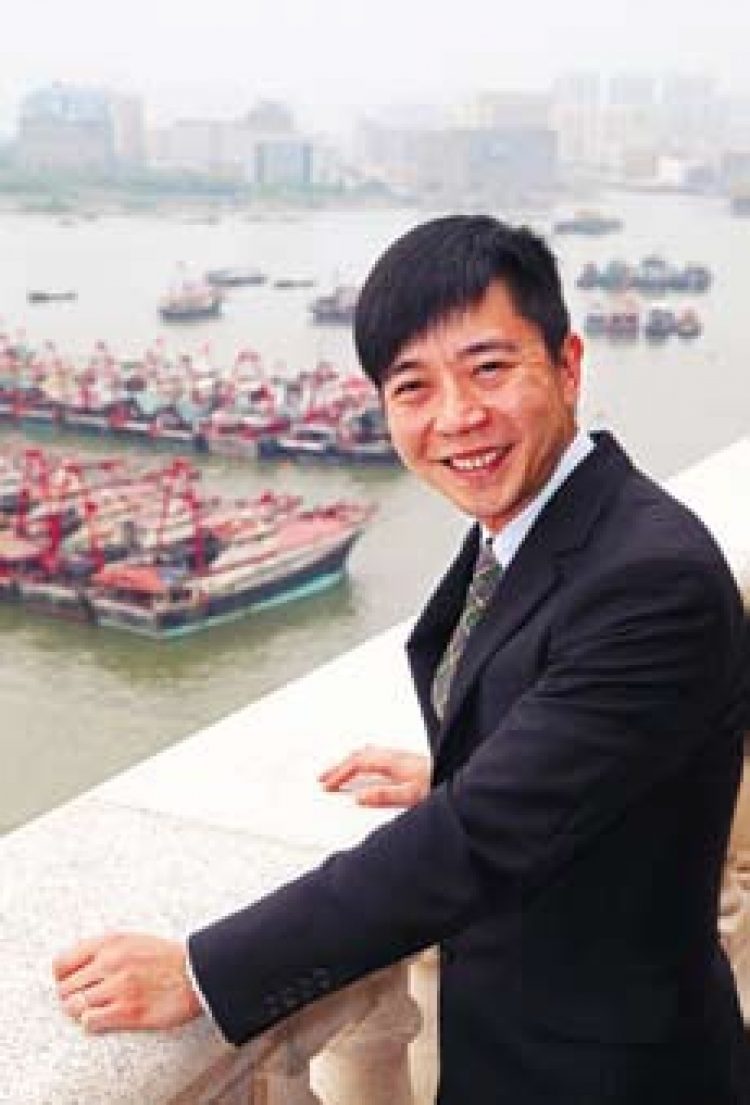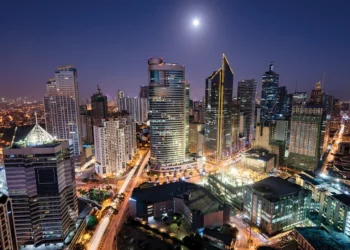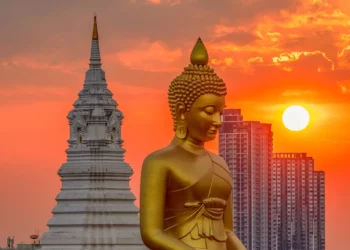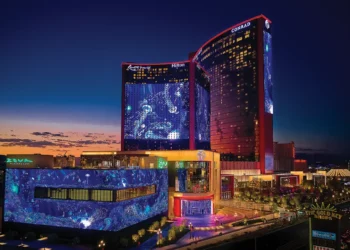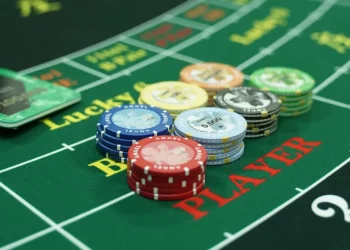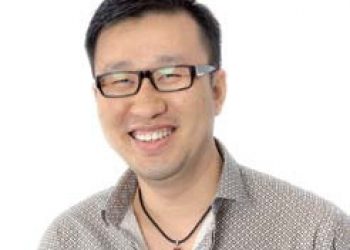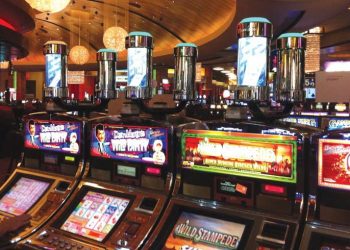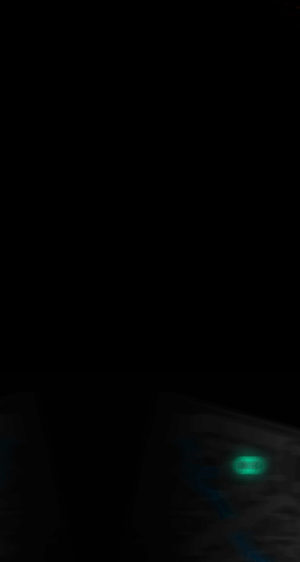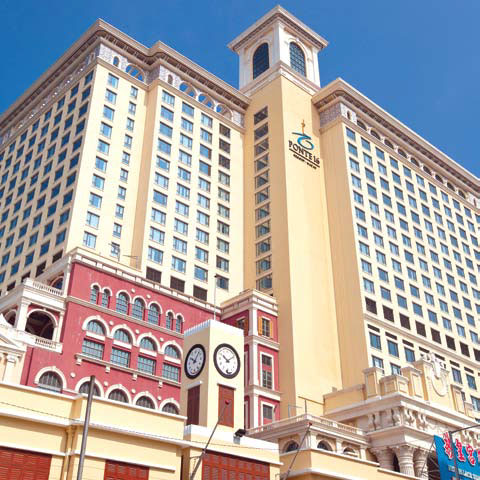
Ponte 16’s Hoffman Ma tells us what gives his property more mass-market appeal than the other casinos on the Macau Peninsula
Sociedade de Jogos de Macau (SJM) singled out strong performance at two of its 20 properties (which include three licensed slot halls and 17 casinos) as bolstering its growth in 2011. First was the company’s flagship property, Grand Lisboa. Second was Ponte 16 Resort, Macau, one of SJM’s 14 so-called “satellite” casinos.
Ponte 16 is 51% owned by SJM, with the remaining share held by the property’s third-party promoter, Success Universe Group. The property has recorded continuous improvement in its operating results since its February 2008 opening. Its recent revenue growth has outpaced that of the overall market, and in 2011 it recorded its first net profit with adjusted property EBITDA [earnings before interest, tax, depreciation and amortization] reaching HK$316.8 million for the year, up from $206.6 million in 2010.
One of the distinguishing features at Ponte 16 vis–à–vis SJM’s other satellite casinos is the throng of regular local players it draws to its main casino floor. Whereas Macau-wide VIP baccarat accounts for almost three quarters of total gaming revenue, at Ponte 16 its share is closer to 50% thanks to the property’s strong mass-market appeal.
Ponte 16’s trademark attraction is Asia’s first and only Michael Jackson Gallery, which records the key milestones in the King of Pop’s career and displays a collection of over 40 iconic items related to the artist, including the famous rhinestone-encrusted glove he wore during his first Moonwalk performance. The glove was picked up at auction in late 2009 for US$350,000 by Hoffman Ma, deputy CEO and deputy chairman of Ponte 16 Macau/Success Universe Group, and became the gallery’s centerpiece.
The property’s other major non-gaming draw is its unique location at Macau’s Inner Harbor, within a somewhat dilapidated neighborhood but also offering easy access to Macau’s UNESCO world heritage sites. Part of its remit is to revitalize the surrounding area.
Ponte 16 is currently awaiting government approval to commence construction of its third phase, which will feature a riverside commercial complex with a total floor area of approximately 40,000 square meters. The complex will also include space for the expansion of gaming areas and car parks, with construction expected to be completed by 2014.
Pier 16 – Property Development Ltd, the owner of Ponte 16 casino resort, announced in April the signing of five-year syndicated loan facilities with 11 financial institutions worth HK$1.9 billion (US$245 million) and RMB400 million (US$63.6 million). In addition to funding the construction of the third phase of Ponte 16, the proceeds will also be used to refinance existing credit facilities and repay shareholders’ loans.
Inside Asian Gaming caught up with Hoffman Ma to discuss the upcoming third phase of Ponte 16, as well as the property’s other distinguishing characteristics.
IAG: What is your vision for phase three of Ponte 16?
Hoffman Ma: Phase three will include the shopping arcade and also expansion of the casino. In addition to that, we have tried to work with the cultural side of Macau, the local neighborhood, and we hope that the project can help transform the old town into a more cultural tourist destination of Macau. We are fortunate to have a lot of historical buildings around here, which is already a natural tourism attraction for people coming into Macau.
Within our plan we have included a lot of infrastructure support to the local community as well, such as addressing the water flooding problems, electricity shortages, all that.
This part of town feels like it has a lot of history. Do you actually get people walking around the area and taking in the heritage sites, then popping into Ponte 16?
It would surprise you that the foot traffic we get actually contributes the biggest proportion of our visits.
The major reason visitors choose to stay at our hotel [Sofitel Macau at Ponte 16] is because they can walk around the area. And about 25-27% of our customers are return customers.
From the initial stage of the project we had to build up our reputation so that everybody knows who we are, because a lot of other international brands have already created their awareness before they started their projects here. We were fortunate that after the purchase of the Michael Jackson stuff, that brought us a lot of international exposure, letting a lot of people know who we are and where we are located.
What is the percentage of local players in the casino?
About 30-40% of visitors to the casino are locals. We get about 10,000 daily average visitors to the casino. We have a fair share of visitors between locals, Mainland Chinese and people from Hong Kong.
Are there any differences in the mix of your customers to that of the other casino resorts on the Macau Peninsula?
We have more locals than other casinos and I think in terms of the split between the Mainland Chinese and from Hong Kong, we have a bigger, around a 50/50 split, between the two, whereas for a lot of other places they would have 60/40 between Mainland Chinese and Hong Kong.
Your main floor is packed and I guess a lot of the crowd is made up of regular players. What is it in your offer that keeps people coming back?
For casino guests the most important thing is to know them. They want to be recognized. So, I think, service is probably the most important thing for a casino guest. It’s very simple. What they need is a table and maybe a nice hotel room where they get the service.
You derive a much larger share of your total revenue from mass market play than the market average. What is the secret of your appeal to the mass?
The split between our mass and VIP is about 50/50, whereas the market as a whole is closer to 30/70.
One thing is that we have regular local players, whereas a lot of other properties don’t. And to attract the locals, service is important, as I mentioned.
As for visiting mass-market players, there are two groups of expectations for the people coming into Macau. One is they want to be conveniently located to where they want to go, meaning the Macau peninsula will probably be what they want—you have all the cultural attractions and all the local food nearby. Whereas on the Cotai side I think the expectation will be that everything they need will be in a box. So they can be in there for a weekend with what they want.
Going forward, will there be two distinct groups of visitors to Macau? Will there be Cotai visitors and Macau Peninsula visitors?
I don’t think there will necessarily be distinct groups of visitors. Cotai is just another option for tourists. Maybe one time they want to be in the box, one time they want to try the local things. So it’s just another choice for them. And it really makes sense because if you stay on the other side it costs almost 60 patacas (US$7.5) per trip coming back to this side for the local environment, food and everything else.
You were recently quoted in the press as saying you might be interested in developing a project in Hainan if it were to allow casinos. Do you think the central government in Beijing is likely to allow casinos in Hainan?
A question came out at a conference asking what is my view about Hainan. And what I told them exactly was a license had been offered to the provincial government, but then they chose not to take it.
Beijing offered Hainan a casino license?
Yes, but they declined it. Hainan receives support from the central government amounting to about 30-40 billion renminbi a year (US$4.7-6.3 billion), but if they take the license, they need to surrender that support. The Hainan government decided not to pursue the license, because they decided there was a risk the revenue from casino taxes would not equal the support they get from the central government.
How is the running of this place split between Success Universe Group and SJM?
The license is under SJM, and although some of the workload is split between the two, a lot of the operations are done by Success Universe because SJM is not able to manage too many casinos themselves.
So Success Universe Group handles the promotion and marketing? How did that arrangement come about?
Yes. Prior to 2003, Success Universe [then known as Macau Success] was a VIP hall operator. And in order to compete with the foreign competition, Dr Stanley Ho decided that he needed to ally himself with his existing hall operators, the more productive ones, a lot of which have now become property owners.
What are the terms of your deal with SJM?
The profits are shared pro rata according to our relative shareholdings. In addition to that, a sort of license fee has to be paid to SJM on all the revenue generated in the casino. That’s between 3-5% of revenue.
Japanese pachinko parlor operator Maruhan Corp holds a stake of approximately 5% in Ponte 16. When the project was getting off the ground, there was a lot of talk that the Maruhan connection could drive Japanese players to the property. Has that actually happened?
I think our exposure in Japan, or even our percentage average visitors from Japan, is slightly higher than other casinos. But we don’t see a substantial amount of gaming customers coming from Japan compared to what we get from China. So Mainland Chinese are still our main target audience.
How does your VIP operation work?
We have two outsourced VIPs halls and one in-house hall. Of the two outsourced halls, one is more connected around the Shanghai region and the other is more connected in the Guangdong region.
As for the hall we operate ourselves, we have moved the customers served by Macau Success during the time we were operating VIP halls into that hall at Ponte 16.
We have 18 outsourced VIP tables and operate 9 ourselves. There are a further 81 mass market tables at the property.
Although the Michael Jackson Gallery is good for Ponte 16’s image and branding, does it actually drive play at the casino?
Not necessarily. As I mentioned, we get about 10,000 visits per day into the casino, whereas for the gallery during regular days we get a couple hundred and then maybe during holidays a few thousand—so considerably fewer visitors to the gallery compared to casino guests.
The most important thing about the gallery is the marketing function it provides, especially by allowing us to market ourselves in mainland China, where we can promote the gallery but not the casino. Last year, we joined up with New World Department Store to do a touring exhibition in various cities around China, displaying Michael Jackson memorabilia.
This year, we are planning to do probably the largest Michel Jackson exhibition, a tour in China again, with more than 100 pieces of memorabilia. I don’t think many of the cities will have ever seen an exhibit like this before.
![]()
Uniquely situated—Ponte 16 sits on Macau’s Inner Harbor and offers easy access to the surrounding heritage sites






